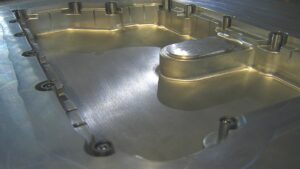Many people do not understand what a mold is. A mold (sometimes called a mould) is a block of material with a hollowed-out cavity that has a shape cut into sides of the cavity. Liquid or pliable material is pushed into the cavity where it adopts the shape of the hollowed out section. After the liquid hardens or sets inside the mold, or the pliable material has been pressed into the shape of the mold, the item is removed from the mold. Molds are made from a variety of materials, such as metal, clay, or wood, and can be used to form items out of many types of materials such as plastics or metals.
What is A Mold Used For?
A mold is used to make multiple copies of a desired item. Injection moulding is widely used for manufacturing of small plastic components and punch molding is used to press large sheets of metal into shapes like the entire body panels of cars. Molds are used in the manufacturing of many items used for our daily living.
Molds are divided into metal molds and non-metal molds, according to the different materials they are used to form.
Metal molds are divided into: casting molds, forging molds, die-casting molds, stamping molds, powder metallurgy molds, etc.
Non-metallic molds are divided into: plastic molds and inorganic non-metallic molds.
Plastic molds include: injection molding molds, extrusion molding molds, compression molding molds, suction molding molds, blow molding molds, high foam polystyrene molding molds…etc.
Read more: Introduction to Injection Molds

